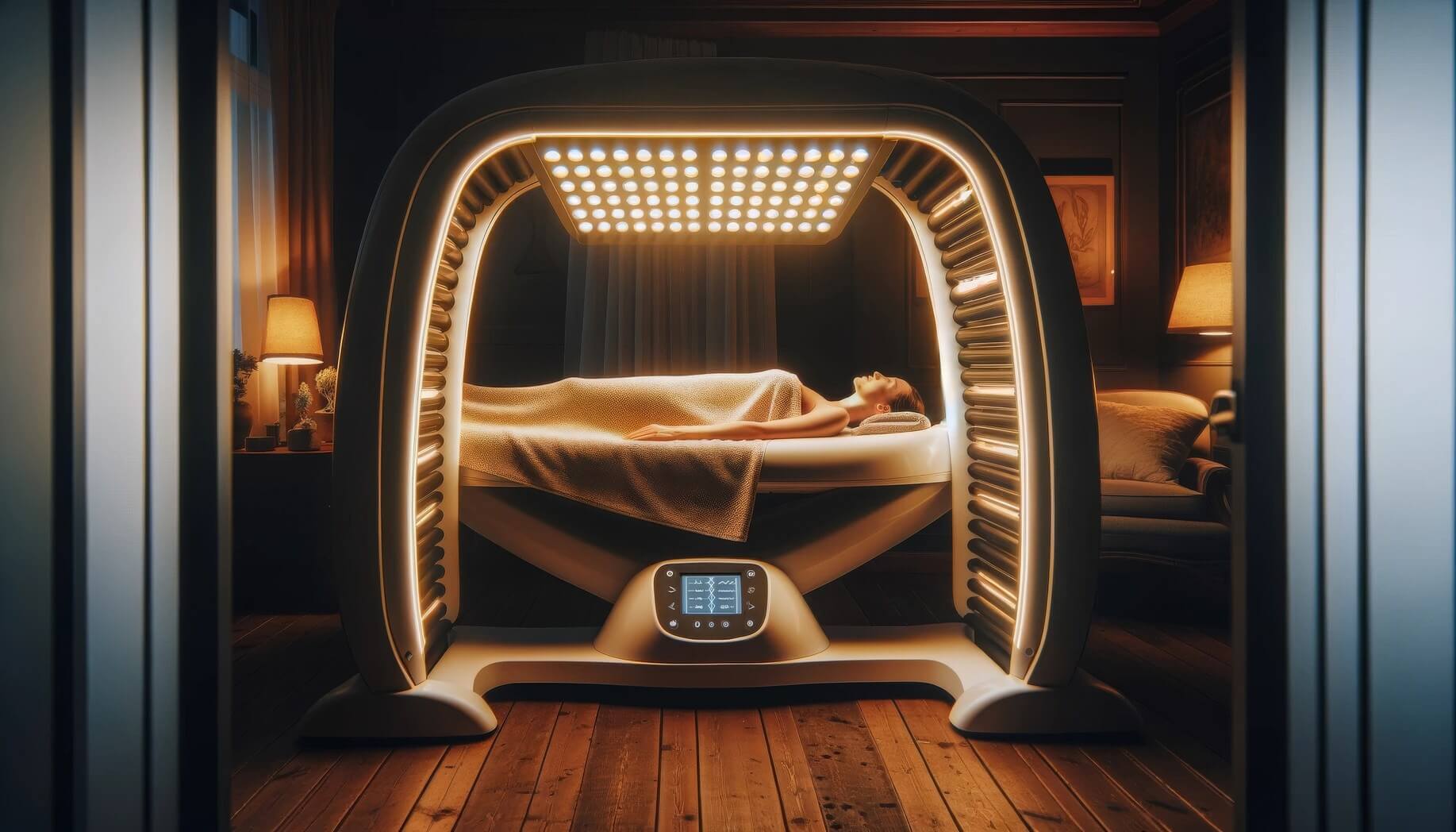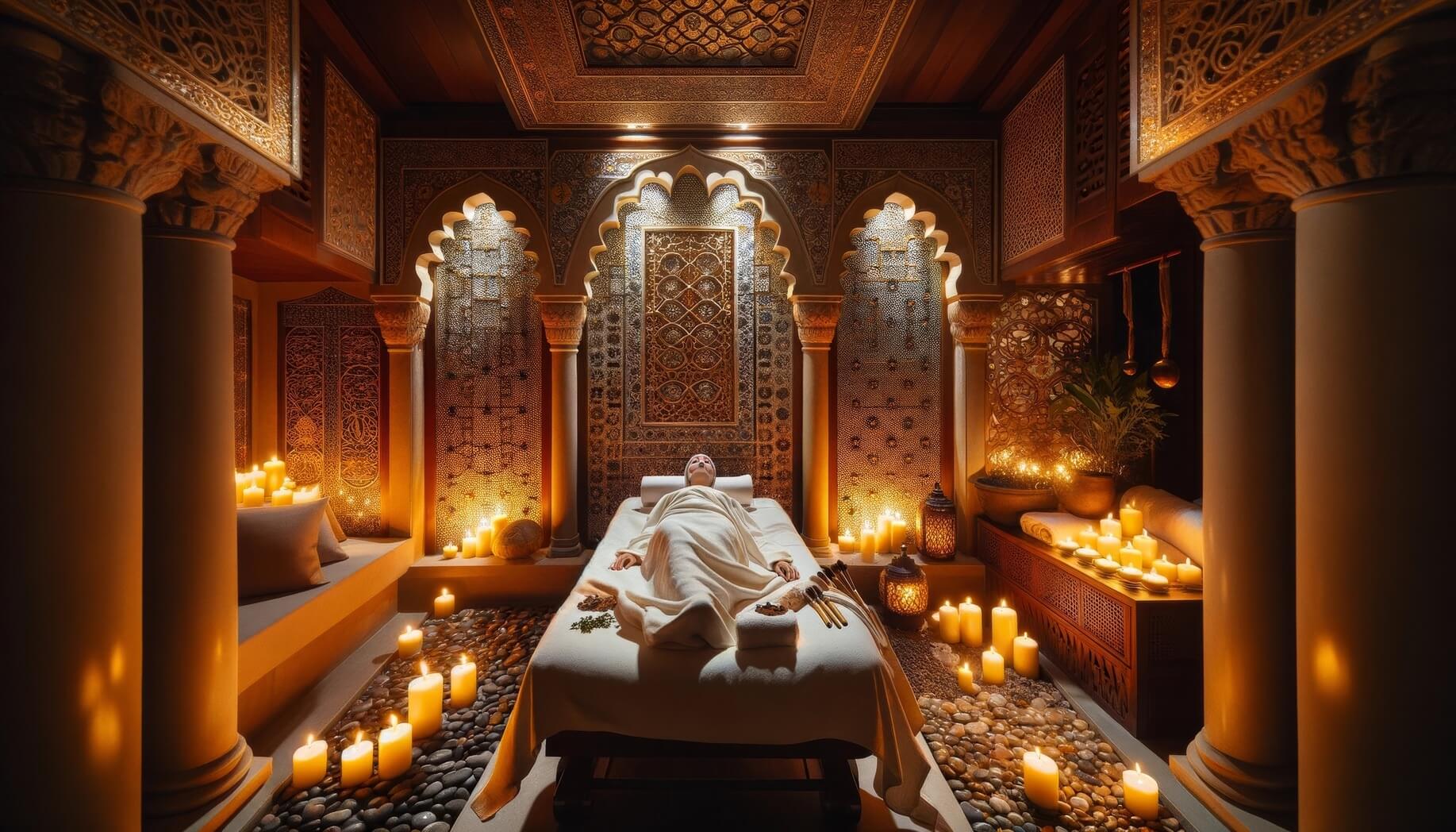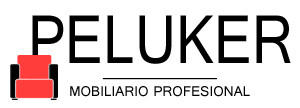Thermotherapy is a technique that uses therapeutic heat to treat various aesthetic and medical conditions. In recent years, it has become very popular in spas and aesthetic clinics due to its multiple benefits.
What is Thermotherapy?
Thermotherapy consists of applying heat to the skin and body tissues for therapeutic purposes. Different heat modalities are used, such as hot compresses, infrared lamps, saunas, steam baths, and others.
The applied heat produces several effects:
- Vasodilation: Blood vessels dilate, improving blood and lymphatic circulation. This helps reduce inflammation, nourish cells, and eliminate toxins.
- Analgesia: Reduces pain by temporarily blocking the transmission of painful stimuli.
- Muscle relaxation: Heat relaxes tense and contracted muscles.
- Metabolic effect: Increases cellular metabolism.
- Regenerative effect: Stimulates the regeneration of damaged tissues.
Benefits of Thermotherapy
The application of therapeutic heat offers multiple benefits:
1. Relieves muscle pain
Heat is very effective for treating muscle contractures, cramps, tension, and pain associated with conditions such as fibromyalgia. Thermotherapy relieves these symptoms by reducing muscle tension and stimulating circulation.
2. Improves injuries and inflammatory processes
Heat helps reduce inflammation and accelerate the recovery of sports injuries (sprains, tears), muscle contractures, and rheumatic processes by improving blood circulation.
3. Reduces cellulite and localized fat
The application of heat stimulates circulation and metabolic activity. This helps mobilize fat from adipose cells, reducing cellulite and localized fat.
4. Combats sagging and improves skin firmness
Thermotherapy stimulates the production of collagen and elastin, the main proteins that provide firmness, elasticity, and smoothness to the skin.
5. Attenuates stretch marks
Deep heat applied to stretch marks helps regenerate damaged skin, making them less visible and preventing the appearance of new stretch marks.
6. Relieves symptoms of menopause
For menopausal women, thermotherapy can alleviate hot flashes, night sweats, irritability, and other common symptoms.
7. Improves circulatory problems
In people with poor circulation, vasodilation from heat improves venous return and reduces swelling, heaviness, cramps, and tingling in the legs.
8. Relaxation and anti-stress effect
Different thermotherapy modalities (sauna, steam baths) induce a pleasant sensation of relaxation that relieves stress and nervous tension.
9. Strengthens the immune system
Several studies have shown that moderate thermotherapy can enhance immune function, especially T and NK lymphocytes that protect against infections and tumor cells.
10. Complements aesthetic treatments
The application of heat before treatments such as massages, lymphatic drainage, or ultrasound enhances the results by improving circulation and metabolism.

Thermotherapy Modalities
There are different techniques for applying therapeutic heat:
Dry sauna
A wooden room that reaches a temperature between 80-100°C with 10-20% humidity. Deep heat produces sweating and toxin elimination.
Steam bath
An enclosed room where water vapor is generated, reaching 50-60°C and almost 100% humidity. Opens pores, hydrates the skin, and detoxifies.
Infrared beds
Emit infrared radiation that heats the skin and tissues up to 4 cm deep. Improves muscle and joint pain.
Radiant heat lamps
Quartz or ceramic lamps that emit radiant and infrared heat, heating the skin. Used before massages or to treat muscle contractures.
Hot compresses
Cloth bags filled with gel or seeds that are heated in a microwave or boiling water. They are applied locally to muscles to relieve tension.
Paraffin
Involves immersing the hands or feet in hot paraffin at 50-60°C. Deeply hydrates the skin and relieves joint pain.
Mud therapy
Topical application of preheated thermal mud rich in minerals, algae, and medicinal plants. Relaxes muscles and reduces inflammation.
Cryotherapy
Uses extreme cold combined with heat to stimulate blood circulation. Alternates immersion in ice baths and heat.
Common Thermotherapy Procedures
The most requested thermotherapy treatments in aesthetic clinics are:
- Thermosauna: 10-15 minute sessions of dry sauna at 80-90°C. Eliminates toxins and improves skin.
- Body wrap: Application of hot compresses soaked in relaxing and firming infusions on the skin.
- Lymphatic drainage: Manual massage with warm compresses to activate lymphatic circulation and reduce fluids.
- Breast firming: Massage with hot jade stones to tone and firm breast tissue.
- Thermal exfoliation: Exfoliation with ozonized steam that opens pores and improves skin appearance.
- Hot mask: Heated clay or algae masks that deepen the action of the product.
- Foot bath: Immersion of the feet in hot paraffin for potent hydration.
- Thermomassage: Manual massage with warm compresses or hot stones to release muscle tension.
Contraindications of Thermotherapy
Although it is a safe treatment, thermotherapy has certain contraindications:
- Pregnancy and breastfeeding
- Severe heart diseases
- Uncontrolled high blood pressure
- Severe varicose veins or deep vein thrombosis
- Fever, acute infections or bacterial skin infections
- Vasomotor disorders such as livedo reticularis
- Advanced peripheral venous insufficiency
- Thermoregulation anomalies
- Pacemaker or other internal electronic device
- Recent surgeries
Consult your doctor before undergoing any heat treatment. It is also important to hydrate well before and after thermotherapy to replenish fluids.
Thermotherapy Equipment for Aesthetics
There is a wide variety of thermotherapy equipment designed for aesthetic and wellness use:
- Infrared thermal beds
- Infrared saunas
- Hydromassage bathtubs with chromotherapy
- Ozone steam cabins
- Paraffin foot baths
- Compress and towel warmers
- Radiant heat lamps
- Thermal massage beds
- Cryotherapy equipment
- Digital thermometers for temperature control
It is important to have high-quality equipment to ensure uniform, precise, and safe heating. Disposable implements such as thermal sheets, facial protectors, etc. are also required.
Precautions for Thermotherapy
To obtain the benefits of thermotherapy safely, it is important to follow these recommendations:
- Evaluate the client’s health condition and possible contraindications.
- Do not exceed 40°C in areas such as the face, abdomen, breasts, or joints.
- Start with short exposure times and gradually increase.
- Hydrate well before and after treatment.
- Avoid alcohol consumption or heavy meals before treatment.
- Do not apply heat to inflamed, injured, or varicose skin areas.
- Use thermal protectors (towels, sheets) between the skin and heat source.
- Monitor the temperature and thermal sensation of the client.
- Allow cooling periods between heat applications.
Contraindications and Precautions
Thermotherapy is contraindicated in the following conditions:
- Pregnancy and breastfeeding
- Severe uncontrolled hypertension
- Deep vein thrombosis
- Severe heart diseases
- Neoplasms
- Severe dehydration
- Fever or acute infection
- Advanced diabetes mellitus with neuropathy
Caution is recommended for people with varicose veins, dermatitis, cardiac pacemakers, lupus, multiple sclerosis, Raynaud’s disease, or those taking heat-sensitive medications.
Consult your doctor before undergoing any thermotherapy treatment, especially if you have chronic health problems.
Thermotherapy at Home
There are safe and effective options for thermotherapy that can be done at home:
- Hot baths: Help relax tense muscles and relieve pain. Adding bath salts enhances the benefits.
- Thermal bags: Fill reusable bags with rice or seeds and heat in the microwave to apply to painful areas.
- Warm compresses: Soak towels in hot water and apply to tired or contracted muscles.
- Massage with oils: Heat essential oils and gently massage the skin to relieve tension.
- Portable sauna: Allow you to take steam saunas at home safely and comfortably.
- Thermal pads: Connect to electricity and apply dry heat to the back, neck, or abdomen.
- Electric blanket: Provides pleasant surface heat to relax the body before sleep.
Take precautions when using thermal modalities at home and consult your doctor if you have any doubts. Properly applied thermotherapy can complement your well-being and beauty.

Frequently Asked Questions about Thermotherapy
What is thermotherapy?
Thermotherapy consists of the therapeutic application of heat using different techniques (compresses, lamps, sauna) to obtain analgesic, anti-inflammatory, vasodilator, and regenerative benefits in the body.
How does heat act on the body?
The applied heat produces vasodilation that improves blood and lymphatic circulation, relaxes contracted muscles, reduces pain and inflammation, and raises body temperature by activating cellular metabolism.
What effects does it have on the skin and tissues?
Thermotherapy stimulates the production of collagen and elastin, increases the elimination of fluids and toxins, reduces cellulite, firms tissues, and attenuates stretch marks.
What medical conditions does thermotherapy treat?
Thermotherapy is useful for muscle contractures, low back pain, arthritis, sports injuries, cellulite, venous insufficiency, menopausal symptoms, stress, among other conditions.
What are the contraindications of thermotherapy?
It is contraindicated during pregnancy, breastfeeding, severe hypertension, thrombosis, severe heart diseases, fever, acute skin infections, and some specific diseases.
What precautions should be taken?
Hydrate well, start with short times, control the applied temperature, allow cooling periods between heat applications, and avoid damaged or inflamed areas of the skin.
What thermotherapy modalities exist?
The most used are dry sauna, steam baths, hot compresses, infrared lamps, thermal beds, paraffin, body wraps with algae and muds, foot baths, cryotherapy, among others.
What equipment is required to perform thermotherapy?
Radiant heat, steam, sauna, thermal bed, compress warmer, disposable protectors, thermometers, as well as specific products for each treatment, are needed.
Can thermotherapy be done at home?
Yes, hot baths, thermal bags, warm compresses, portable saunas, and electric blankets allow you to safely take advantage of thermal benefits at home.



